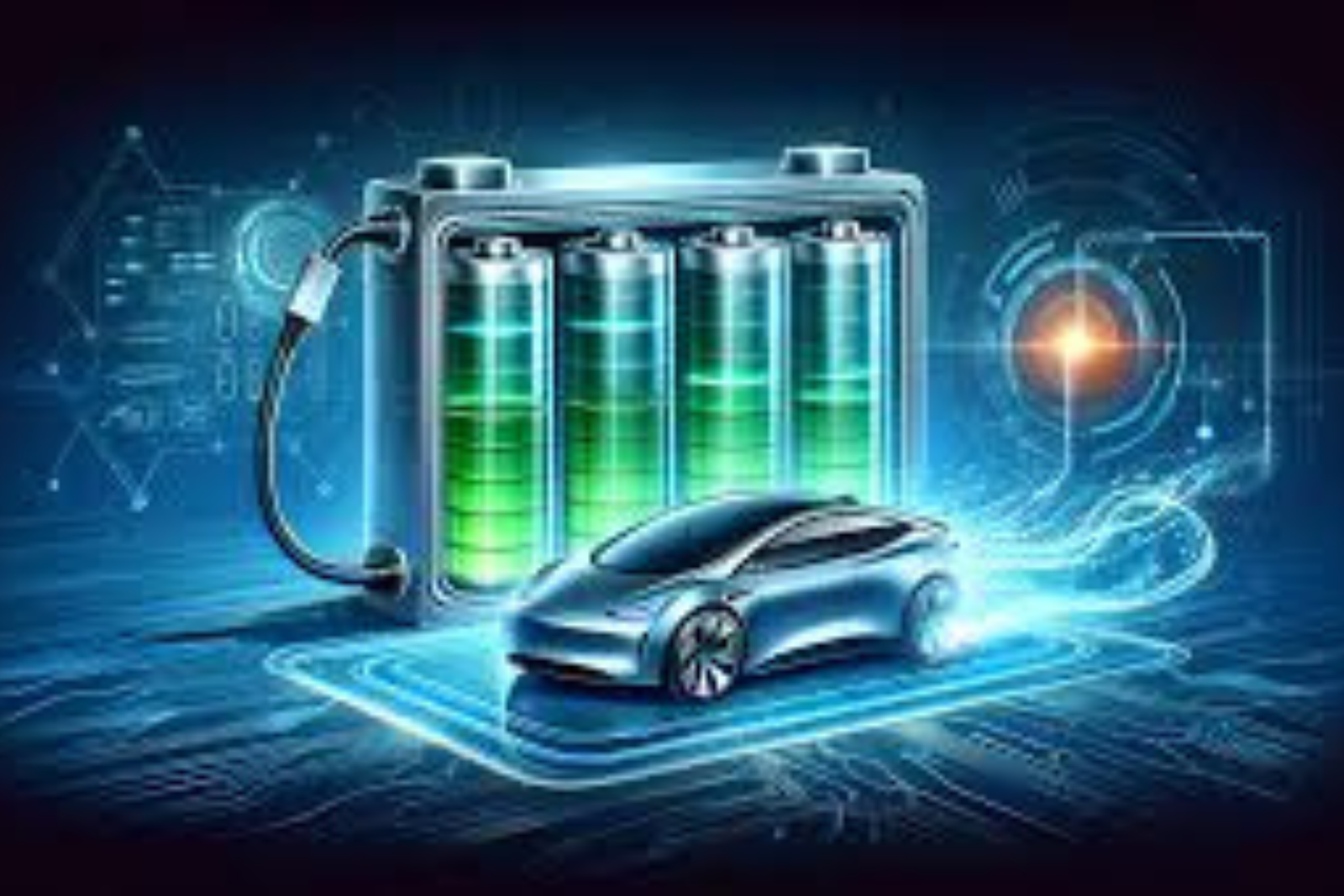The global transition to electricvehicles (EVs) is rapidly accelerating as governments and industries push for amore sustainable future. Central to this transformation is the development ofhigh-performance, cost-effective, and energy-dense batteries. Innovations in
electric vehicle (EV) battery technology are crucial to enhancing the driving
range, reducing charging times, lowering costs, and ultimately making EVs more
accessible to a broader audience. As we approach 2025, several promising
breakthroughs are expected to emerge that could revolutionize the EV landscape.
In this article, we will explore 12 key battery technologies and innovations to
watch in 2025.
Solid-State Batteries
One of the most anticipated developments in EV battery technology is the advent of solid-state batteries.
These batteries replace the liquid electrolyte used in traditional lithium-ion
(Li-ion) batteries with a solid electrolyte. The advantages are significant:
solid-state batteries have the potential to offer higher energy densities,
faster charging times, enhanced safety, and longer lifespans. Solid-state batteries are less likely to overheat or catch fire, as there is no flammableliquid electrolyte, which could make EVs even safer for consumers. As of now,several companies and research institutions are working on overcoming challenges related to manufacturing and scalability. However, by 2025, it is
expected that solid-state batteries will have moved closer to
commercialization, with prototype vehicles or limited production models
incorporating them.
Lithium-Sulphur Batteries
Another promising technology is lithium-Sulphur (Li-S) batteries. These batteries use Sulphur as the
cathode material instead of the traditional cobalt or nickel-based cathodes
used in Li-ion batteries. Lithium-Sulphur batteries are lighter and have the
potential to offer much higher energy densities, possibly leading to EVs with
significantly increased range without requiring larger or heavier batteries.
However, challenges related to Sulphur's poor conductivity and the battery's
limited lifespan have hindered its commercial viability. Researchers areactively working on improving the cycle life and conductivity of lithium-Sulphurbatteries, and by 2025, advancements may make this technology viable forcommercial EV applications.
Silicon Anode Batteries
Currently, most EV batteries use graphite as the anode material. However, silicon is a promising alternative due to its higher theoretical capacity, which could result in batteries that are smaller, lighter, and capable of holding more charge. Silicon anode batteries could improve both the energy density and the longevity of EV batteries. While silicon anodes have been prone to expansion and contraction during charging cycles—leading to degradation—researchers are working on stabilizing this process. Several companies are developing silicon-based anode materials that could be incorporated into lithium-ion batteries. By 2025, silicon anodesmay be a common feature in many EV battery packs, enhancing range andperformance.
Sodium-Ion Batteries
Sodium-ion batteries are
considered a potential alternative to lithium-ion batteries. Sodium is abundantand inexpensive compared to lithium, making sodium-ion batteries acost-effective option. These batteries can operate effectively in lower
temperatures, making them suitable for regions with cold climates. While their
energy density is currently lower than that of lithium-ion batteries,
advancements in materials science and electrode design could improve their
performance significantly by 2025.Major Chinese manufacturers, such as CATL,
are already developing sodium-ion batteries and are expected to bring them to
market soon. If these improvements materialize, sodium-ion batteries couldprovide a more affordable option for EVs, especially in cost-sensitive markets.
Fast-Charging Batteries
One of the biggest challenges
with current EV technology is the time it takes to charge a battery. Whileimprovements in charging infrastructure are being made, increasing the chargingspeed of batteries themselves remains a critical area of research. Fast-changingtechnologies, such as ultra-fast-charging lithium-ion batteries, are beingdeveloped to allow EVs to recharge in minutes instead of hours. Researchers are
exploring different strategies to enable faster charging without compromising
the longevity or safety of the battery, such as using new electrode materials
or optimizing the electrolyte composition. By 2025, we could see a significant
reduction in charging times for most EVs, potentially allowing drivers to
charge their cars in a similar timeframe to refueling a gasoline vehicle.
Battery Recycling and Second-Life
Applications
As the number of electric
vehicles on the road increases, so too will the demand for battery recycling
and *second-life applications. By 2025, more advanced technologies forrecycling EV batteries will be critical in addressing sustainability concerns.Companies are working on methods to efficiently extract valuable materials like
lithium, cobalt, and nickel from used batteries, which can then be reused in
the production of new battery cells. Additionally, second-life batteries—batteries
that have been retired from EVs but still have usable capacity—could be
repurposed for grid storage or other applications. These innovations will helpreduce the environmental impact of battery production while improving theoverall sustainability of electric transportation.
Graphene Batteries
Graphene is a single layer ofcarbon atoms arranged in a two-dimensional lattice. It has extraordinary
electrical and thermal conductivity, which makes it an attractive material for
improving battery performance. Graphene-based batteries can potentially offer
faster charging, higher capacity, and longer cycle life than traditional
batteries.They can also be lighter and safer, reducing the risk of overheatingor fires. While still in the experimental phase, graphene-based batteries areexpected to become commercially viable within the next few years. By 2025, EVsusing graphene-enhanced batteries could hit the market, providing majorimprovements in terms of both performance and safety.
Improved Battery Management
Systems (BMS)
An often overlooked but critical
aspect of battery technology is the Battery Management System (BMS). Thissystem controls the charging and discharging cycles of the battery and ensuresits safety, longevity, and optimal performance. In the coming years, BMS
technology is expected to become much more advanced, with AI-driven systems
that can predict battery health, optimize performance, and enhance safety. powered BMS will likely become standard in many EVs, offering not only
improved battery lifespan but also enhanced overall vehicle performance,
potentially leading to more energy-efficient and reliable EVs.
Dual-Carbon Batteries
Dual-carbon batteries represent a
new approach to energy storage that uses both carbon electrodes. Unliketraditional lithium-ion batteries, dual-carbon batteries use activated carbonand a special electrolyte solution to store energy. These batteries have the
potential to offer high performance, low cost, and long-life cycles, as well as
being more environmentally friendly. By 2025, dual-carbon batteries may find
their way into the EV market, particularly in vehicles where cost and
sustainability are more critical factors than ultra-high performance.
Quantum Dot Solar Charging
Systems
Although not directly related to
battery technology, quantum dot solar panels integrated into EVs could offer a
new way to charge electric cars. Quantum dots are nanoscale semiconductorparticles that can absorb sunlight and convert it into electricity moreefficiently than traditional solar cells. This could result in vehicles that
charge partially from the sun, extending their range and reducing reliance on
external charging stations. By 2025, it is possible that some EVs will come
equipped with integrated quantum dot solar panels, adding a new layer of
convenience and sustainability to the EV ecosystem.
Vehicle-to-Grid (V2G) Technologies
Vehicle-to-Grid (V2G) technology enables EVs to not only draw power from the grid but also feed electricity back into the grid. This creates a two-way energy flow and could help balance grid demands, especially with renewable energy sources like wind and solar becoming more prevalent.V2G systems require advanced battery technologies that allow for deeper discharge cycles and greater efficiency. By 2025, it is expected thatmore EVs will be equipped with V2G technology, contributing to energy stabilityand helping to make the grid smarter and more resilient.
Quantum Battery Technology
A cutting-edge area of research
is quantum batteries, which harness quantum mechanics to store and release
energy. While still in the early stages, quantum batteries could theoreticallyoffer exponentially faster charging and longer-lasting energy storage comparedto current battery technologies. By 2025, if breakthroughs in quantum physics
and engineering continue, we may see the first commercial applications of
quantum batteries, possibly revolutionizing energy storage for electric
vehicles.
Conclusion
As the electric vehicle market
continues to evolve, the next few years are poised to bring significant
breakthroughs in battery technology. From solid-state and lithium-Sulphur
batteries to graphene and quantum dot solar charging, these innovations promise
to enhance the performance, safety, and sustainability of EVs. As we looktoward 2025, the future of electric vehicles appears brighter than ever, withnext-generation batteries leading the charge toward a greener, more sustainabletransportation ecosystem.











